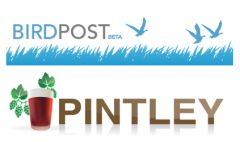In case you missed it, six months of headlines have declared Facebook all but dead and buried for brands and marketers.
There’s truth to the claim – while Facebook is hardly a ghost town, young people have begun migrating to more intimate messaging services such as Snapchat.
While we’re at it, let’s mention the fact that the growth rate of Twitter has been slowing down considerably, and that any list of active users will contain a far greater percentage of marketers, journalists, and PR professionals (aka people not in your target audience) than the public at large.
As these established networks stagnate and the social world continues to splinter, the challenge in making sure your well-crafted message reaches the most receptive audience only grows more intense.
For many, the next step lies in the rise of niche networks.
Niche Networks: What are They?
Good question.
The concept isn’t a new one, but its definition has changed quite quickly: A 2011 Mashable list of top niche networks lists Instagram, Pinterest, and Foodspotting, two of which have already gone on to (much) bigger and better things.
Today, a quick Google search for your area of interest will, in all likelihood, reveal a corresponding community.
Are you an ornithologist? Connect with your friends (feathered and otherwise) at BirdPost.
A craft beer lover? Look for tastings and suggestions at Pintley.
A running/biking fanatic? Sign up for Strava.
An ambitious designer? Share your work on Dribbble.
A recovering goth/industrial addict? You get the point (but try Vampire Freaks if you’re curious).
The potential value of less specific networks such as Social Moms, Dogster/Catster, and Care2, or the “largest online community for healthy and green living, human rights and animal welfare,” may be even greater.
We probably don’t need to tell you that such niches double as potential gold mines for marketers.
Digging in to Find the Value
How can we better serve our clients’ needs by tapping into these niche networks and getting closer to their audiences?
Some networks make the answers obvious. GoodReads encourages publishers to schedule online Q&A sessions with popular writers and sends members email notices for events involving authors they’ve read. The GoodReads model works because it’s transparent, and it delivers real value to both user and sponsor.
Hyper-specific B2B networks such as Active Rain, a community run by – and for – real estate professionals, mirror LinkedIn groups by hosting conversations on topics relevant to the discipline. What better place to mention your client’s real estate locator app than the community’s “technology and tools” blog?
In order to derive value from these groups, we must gain entry into the communities in a transparent, trustworthy way. Behind each keyboard must be a real flesh-and-blood human who understands the interests of the network.
What experiences have you had working within niche networks?
This piece comes from research performed for the 2014 edition of the firm’s annual Digital Trends Report.
